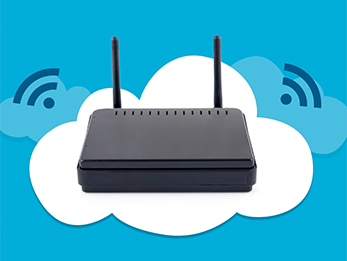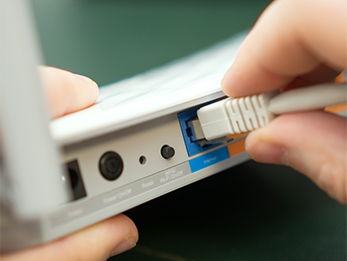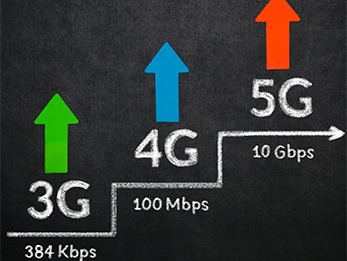#multiwanrouter
Text
The benefits of SD-WAN over traditional WAN architectures
The traditional hub and spoke model was predominant before the widespread use of SD-WAN. In a traditional model, to move data from the cloud, the data has to move to the data centre and then to the final destination. On the contrary, in the case of SD-WAN, Points of Presence or PoPs are distributed in the data centres across the globe, facilitating the transfer of data without routing through the data centre.
Before discussing whether SD-WAN is beneficial over traditional WAN architecture, let us understand both concepts.

Traditional WAN
Several LANs located at different geographical locations are connected with one another in traditional networking. Traditional WAN connects branch offices and remote offices to the centralised network to access applications, share data and perform business functions. Conventional WAN was seen as a reliable means to deliver data, but as the business expands across geographical boundaries, the data has to travel through multiple carriers. This could lead to network congestion, packet loss, call drops, etc. Moreover, each and every server and router must be updated every time a change in policy occurs due to its distributed nature. User experience is compromised when streaming HD videos, virtual reality or during video conferencing.
SD-WAN
SD-WAN connects hardware from various locations. Different connections are used for transporting data, including private lines, Virtual Private Networks or VPNs, Multiprotocol Label Switching (MPLS), broadband and LTE. SD-WAN finds the most efficient route to transport the data, whereas traditional WAN architecture uses corporate data centre connections to route the data.
Types of SD-WAN Architecture
Enterprises can opt for three types of architecture, on-premises SD-WAN, cloud-enabled SD-WAN, and cloud-enabled with backbone SD-WAN.
On-Premises SD-WAN: It is a plug-and-play SD-WAN box that can be installed on your premises or onsite. It does not connect to the cloud gateways but uses company connections.
Cloud-enabled SD-WAN: This configuration uses both software and hardware. It uses an onsite SD-WAN device and connects to the virtual gateway. In turn, the gateways are connected to the cloud providers like Microsoft Office 365, AWS, Azure, DropBox and Salesforce.
Cloud enable plus backbone: Sometimes issues arise while using the internet with SD-WAN, to avoid this snag, backbone is used. It connects the enterprise premises to the cloud PoP and from here the traffic is diverted to the private fibre optic network backbone. The low latency private backbone results in minimum packet loss and jitters.
Why is SD-WAN better than traditional WAN?
Thanks to the internet, businesses are transforming faster as the world is shrinking. The Pandemic has forced us to work from remote locations, and SD-WAN perfectly fits in this space. Let’s see why SD-WAN is better than traditional WAN.
Traditional WAN allows prioritisation and traffic predictability but at a high cost. On the contrary, SD-WAN cuts down on internet costs, and users must spend big money on bandwidth upgrades. SD-WAN offers flexible network connectivity as it can run both on LTE and broadband. SD-WAN is affordable and allows app prioritisation without any packet loss.
Traditional WAN is private and allows secure communication. In comparison, SD-WAN offers end-to-end encryption across a VPN connection with an option to add and merge additional security layers, such as firewalls, for unified threat management.
In traditional WAN, changes must be configured manually due to their distributed nature. In SD-WAN, you can scale as your business grows. Just leave it to your managed service provider, and they will do the rest.
SD-WAN is a reliable way to receive and deliver network services to your organisation. Though, some organisations adopt hybrid WAN. An organisation should select the appropriate network based on the long-term and short-term objectives in mind. Since each organisation has unique requirements, there is no one size fits all concept. You all require a skilled workforce for maintaining and managing network services. If you are ready for a change, then train your network professionals in SD-WAN for a seamless transformation.
SMOAD SD-WAN helps with a smooth transformation with its best-in-class services. Connect with us for more details.
#sdwansolutions#4glterouter#4glterouterwithsimcardslot#networkrouters#remoteconnectivity#multiwanrouter#loadbalancingrouter
0 notes
Photo

SMB Switches use for small business. Cisco Small Business Smart Switches offer networking functionality similar to managed switches, without the management complexities. When you need to expand your network with more advanced deployments like real-time video or voice communications. So, you visit our site dvcomm.in and purchase all Cisco Switches and Routers.
For more info Visit: https://www.dvcomm.in/it-telecom/networking-switching/cisco.html
#CiscoSG30028SFPSwitch CiscoSG30028SFP CiscoSG35028 ciscosg35028 CiscoSG350-28PSwitch ciscosg35028P CiscoSG35028P ciscosg95 CiscoSG9524AS cis#CiscoSG30028SFPSwitch#CiscoSG30028SFP#CiscoSG35028#CiscoSG350-28PSwitch#ciscosg35028P#ciscosg95#CiscoSG9524AS#ciscosmbswitches#ciscoswitch#CiscoSwitches#CiscoWAP121#CiscoWAP150#multiwanrouter#multiwanrouters#managedpoeswitch
0 notes
Text
How SD-WAN is transforming network security: Zero-trust architecture and more
Businesses are expanding into new geographical boundaries, increasing the need for a hybrid IT environment. The traditional network infrastructure is choking under pressure, unable to match the growing demands. The need for multiple sources has resulted in the growth of Software Defined Wide Area Network (SD-WAN) technology.

Can SD-WAN transform network security?
SD-WAN promotes secure vendor and agnostic data transport across WAN or internet connectivity increasing hybrid cloud adoption. SD-WAN can aggregate multiple network technologies like MPLS, broadband, LTE, and 5G to connect to branches and remote offices. Compared with MPLS, SD-WAN is 2½ times cost effective due to secure edges, limited staff and router service costs.
Security is the top priority in SD-WAN. Organisations are keen on understanding the security impacts of installing SD-WAN as it should not expose the network to vulnerabilities while connecting to the cloud or embracing new endpoints. In an Enterprise Management Associates (EMA) report, respondents placed security on the top in SD-WAN.
Zero Trust Model in SD-WAN
The security of SD-WAN increases with Zero Trust Model. So, what is Zero Trust Model? It is the security feature that stops trusting applications, networks, users or devices by default and introduces a host of verifications. In this model, authentication is given priority, followed by network security.
A secure SD-WAN architecture promotes agility and performance of your WAN network by establishing security-rich features that can be embraced with your present infrastructure. For on-premises to cloud end-to-end circuit encryption, the model uses IPSec 256-bit protection. The model assists IT managers to monitor and control the access points on the application and network. Firewalls and edge devices must be deployed for foolproof security.
How can the zero trust model replace traditional WAN?
SMOAD SD-WAN enabled security and performance, helping save money. It encompasses all security SD-WAN solutions an organisation seeks. Zero trust principles are brought to every connectivity and not just users. All IoT/OT devices and servers are brought under the ambit of the model. It eliminates any threats and surface attacks using a router WAN network. Now you can convert your branch offices into modern branches using SaaS and cloud app deployments. Automated and integrated connectivity can reduce internet outbreaks and provides smarter and faster service.
New architecture needs new security with transactions moving to the cloud and internet; there is a need for a highly secure environment to protect distributed users from the vulnerabilities of attack. Today, applications, data and devices are moving out of the perimeter of security as they breach the traditional line of control. As the trusting enterprise perimeter is violated, there is a need for modern defence strategies for distributed workforces. It is here that the Zero Trust Model comes into play. Some of the tenets of this model include:
Securing resources and accesses irrespective of hosting model or location
Adopting default deny strategy while establishing application access
Traffic logging and inspection for applications you control and don’t in order to monitor any malicious activity.
Zero Trust Security components
The Zero Trust Security components include:
Secure Internet Gateway (SIG): The ultimate idea of Zero Trust security is to protect the user while accessing applications beyond your control. A simple click can unleash cyber threats on your connectivity. With remote offices set in, the devices are unmanaged, and the internet is the choice of the corporate network. SIG is simple, quick and cheap while securing Direct Internet Access (DIA) traffic. SIG is safe, as it proactively protects users irrespective of location. Every DNS request is inspected, and malicious domains are blocked.
Identity Aware Proxy (IAP): The architecture provides application access through a cloud-based proxy. In this architecture, identity and authorisation happen at the edge and are only on a need-to-know basis. It uses standard HTTPS protocol at Layer 7 or the application layer. IAP identifies the source and verifies the user and device trust. It checks the security criteria like certification, password protection, endpoint direction, response solutions and installation of the latest OS. The user traffic is inspected, and any application request can be examined, authorised and terminated. After terminating the transaction on the proxy, additional features are integrated for better user experience and protection of the application.
Transform your business into a modern network model by protecting the line of defence. SMOAD believes SD-WAN with Zero Trust Security is the initial step to moving to a safe and threat-free internet.
Call us for a demo!
#loadbalancingrouter#multiwanrouter#networkrouters#4glterouter#sdwansolutions#4glterouterwithsimcardslot#sdwanrouter#4gsimrouter#5glterouterwithsimcardslot#remoteconnectivity
0 notes
Text
SMOAD SD-WAN AND THE INTERNET OF THINGS (IOT): ENHANCING CONNECTIVITY AND CONTROL
There’s no denying that SD-WAN has indeed enhanced the quality of connectivity and the business application experience. The continued evolution of SD-WAN has also enabled enterprises to take advantage of new customised IoT devices. The health industry greatly benefits from remote monitoring systems that report a patient’s vital signs to medical care providers within seconds. Retail stores can now automatically alert their warehouses with the list of products that need replenishment. The magnitude of IoT has constantly been on the rise since its creation, and it is estimated that the size of IoT gadgets may reach 500 billion by the end of 2030. Thanks to SD-WAN-enabled IoT! Flexibility, centralised management, and high security offered by SD-WAN solutions have enabled IoT devices to perform better and be more productive.

Networking Challenges Faced by IoT
Low-latency connectivity, high cost, and poor management of IoT applications spread across multiple locations are the major challenges faced by IoT applications. Let’s take the surveillance camera, for example – the considerable quantity of data that public surveillance cameras transfer can overwhelm the traditional WAN network connections.
You need a solution that prioritises traffic and chooses the right WAN path according to the quantity of traffic transferred. Software-defined WAN (SD-WAN) does the same and streamlines connectivity effortlessly and cost-effectively.
Security is another great challenge faced by IoT applications. Developers usually leave backdoor access open for further development purposes. This makes IoT devices vulnerable to hacks and cyber-attacks. SD-WAN offers advanced security functionalities, and since it can be easily integrated with new devices, security-related challenges can be overcome with ease.
Why is SD-WAN considered the Key Enabler of IoT
By now, you might be aware that SD-WAN offers flexibility which is much needed for the smooth running of numerous IoT devices connected over a wide range of networks. Besides that, it also makes the management of distant IoT applications easy. This is possible because SD-WAN can adapt to devise necessity and application requirements.
Here’s how SD-WAN plays an essential role in simplifying IoT management:
1) Reduces Complexity
IoT devices rely on a range of connections, including wireless, mobile, wired, static, and even cellular. Each connection has its speed, protocol, and agility. While some IoT devices may run on a specific type of connection, most others rely on a combination of one or more connectivity options. This can complicate the connectivity process and pose challenges when it comes to troubleshooting or ensuring a consistent performance from the IoT device.
SD-WAN does away with this complexity by enabling the combination of a range of connections into one hybrid network. SD-WAN allows management of the network from one interface and also makes routing decisions while trying to prioritise traffic.
2) Enhances Security
As mentioned earlier, IoT devices are subject to hacks and attacks. The developer may leave endpoints open for further developmental processes, and these endpoints ultimately serve as vulnerable loopholes for hackers. Improper penetration testing of IoT applications can be another reason IoT devices suffer security issues.
SD-WAN offers high-quality security features through fine-grain segmentation of WAN. Through fine-grain segmentation of WAN, IoT devices are isolated or detached from the rest of the network, thus preventing hackers from accessing extremely secure and sensitive information. Moreover, SD-WAN also enables the virtualisation of security services so that they are deployed across a range of networks in a software format.
3) Enhances Network Visibility
Real-time visibility is another challenge faced by IoT devices dependent on a spectrum of connections. Poor visibility results in the inability to identify the performance attributes of the IoT devices. This could prevent an information officer from gaining access to important metrics and ultimately result in poor device performance.
Most service providers offer SD-WAN solutions embedded with real-time visibility functionality that allows capturing the application and network performance in real-time. Even data such as the total bandwidth consumed by the IoT device can be captured using this functionality. This data can further be used to troubleshoot existing application issues or eventually enhance the device’s performance.
Adopting SD-WAN for your business can provide uninterrupted connectivity keeping your IoT devices on the toe round the clock. For more information on SD-WAN for your IoT devices, contact SMOAD.
Call us for a demo now!
#sdwansolutions#4glterouterwithsimcardslot#4glterouter#networkrouters#loadbalancingrouter#5glterouterwithsimcardslot#multiwanrouter#4gsimrouter#remoteconnectivity#sdwanrouter
0 notes
Text
THE CHANGE IN SECURITY, 5G, AND SD-WAN
The 5G is a complex technology making its security overwhelming. Enterprises are faced with the immense challenge of resolving security concerns of 5G; if you don’t, you are risking the growth of your organisation. The increased urgency to deploy new services adds to the risk. 5G network manufacturers and service providers are responsible for integrating security while deploying 5G. They must assess security effectiveness and focus on innovation rather than worrying about risks.

5G and SD-WAN
The rise in user expectations has increased the complexity of WAN. SD-WAN monitors the performance of mixed connections like MPLS, internet, dedicated circuits, and satellite, selecting the most appropriate connection according to the traffic type. The SD-WAN makes decisions based on link performance, connection cost, and application needs. Traffic can be prioritised based on time-sensitive applications like VoIP over less urgent email.
SD-WAN built-in security
The advantage of SD-WAN security is that it is built from the ground up. It is not an addition after the organisation is exposed to threats. A secure SD-WAN connection supports 5G speed without hampering business critical communication or breaching security gaps.
Security should match 5G
Active traffic inspection at 5G speeds slows down the performance of next-generation firewalls (NGFW). Depending on native security functions of 5G networking solutions alone may not be sufficient, and organisations should adopt integrated, end-to-end security solutions to protect from threats. A secure SD-WAN solution can prepare the 5G to combat new world risks.
The security should be robust, integrated, and multilayered regarding internet branching. While combining SD-WAN and 5G solutions includes an integrated group of multilayered security controls and native controls for a secure solution. If you are experiencing local breakouts in your wired and wireless connections, integrate NGFW, DNS, SWG, IPS, and others for automated protection.
While bringing 5G into SD-WAN, the security concerns only increase. 5G means speed, and security bottlenecks must be addressed while keeping up with speed. SD-WAN security must be fast enough for 5G. With the volume of encrypted traffic increasing, the TLS adoption rate is faster. It is always important to support 5G without disturbing business-critical communications.
It is not easy to achieve this security standard as it is perceived. The NGFW performance takes a huge toll while inspecting encrypted traffic. Monitoring high volumes of encrypted traffic using TLS 1.3 encryption protocol to protect 5G connections from threats will harm SD-WAN and firewalls, putting both speed and security at risk.
So, how do we tackle this situation? Organisations must adopt Secure SD-WAN solutions from the ground up to improve performance. The answer is to use purpose-built security architecture instead of commercial processors. Ensuring the SD-WAN solutions are designed to manage critical security functions without compromising performance rates.
It is important to integrate security into the network seamlessly. With a unified management interface, changes in the SD-WAN environment are visible and managed from one interface. So, both can respond as one consolidated system when a connection requires a change.
The role of secure SD-WAN in 5G must be supported. SD-WAN integrating security and networking, along with hardware created for maximum performance and scalability to power 5G network, is perfect for organisations transitioning to 5G to look for advanced functions to avoid security concerns. Transcend into 5G smoothly with secure SD-WAN solutions for uninterrupted connectivity at an affordable cost.
SMOAD offer state-of-the-art SD-WAN solutions to integrate with 5G securely.
#sdwansolutions#4glterouterwithsimcardslot#loadbalancingrouter#multiwanrouter#5glterouterwithsimcardslot#remoteconnectivity#networkrouters#4glterouter
0 notes
Text
How SD-WAN will advance in 2023
The coronavirus pandemic brought many changes, some of them rather drastic. One of these changes was how the organization worked before, during, and after the pandemic. Work from home became the new normal between the pre-pandemic and post-pandemic eras. However, with the advent of working from home, particularly during the pandemic, several changes were witnessed, especially in the in-office IT infrastructure plans. With more and more people working from home and the need for a secured network becoming the order of the day, cloud-based networking architecture has become the top choice of organizations worldwide.
The traditional network technology could not handle the amount of data the pandemic days thrust upon them. This opened the door for various developments in the networking field; one of those was Software Defined Wide Area Networks or SD-WAN. In SD-WAN, data, connectivity, and traffic between the branches and the headquarters are managed by the cloud environment. These hubs are the “edge” and are crucial for cloud security.
The issues with conventional networking technology were eliminated with SD-WAN. It helped boost the network speed, minimize downtime, improve efficiency, and cut costs, amongst several other advantages. And now, despite the pandemic slowing and people returning to offices, SD-WAN is here to stay. This is because it has helped the offices to work with better efficiency and security.



SD-WAN is constantly evolving and is expected to do so in the new year. The top four trends in the genre of SD-WAN expected to make significant inroads in the coming year are as follows:
1. Secured Remote Access
Security of the network is one of the most significant advantages of SD-WAN. As the employees from the branch offices and remote work setup logged in from different geographical locations, it resulted in serious security issues. SD-WAN helps resolve security concerns. With this architecture, employees could install SD-WAN endpoints in their homes. With SD-WAN, it has become possible for employees to log in to the company’s network with a high level of security, even during travel.
In the coming year, two trends in this particular genre are expected. These are:
An amalgamation of SD-WAN and remote access technology
Replacement of SD-WAN with secure remote access
2. SD-WAN As a Service
Companies offering SD-WAN solutions highlight management, optimization, and redundancy capabilities in their package. Companies offering SD-WAN solutions are now pitching it as a service, meaning everything with regards to SD-WAN, right from installation to maintenance, is the service provider’s responsibility. With such a solution, businesses can narrow their attention to their core competencies because they have fewer SD-WAN-related concerns to examine and address.
3. Secure Access Service Edge
Secure Access Service Edge is a combination of SDN and SD-WAN along with security features. SASE is an ultra-secure, high-on-performance, and highly adaptable network architecture. It is now anticipated that SD-WAN will eventually become a part of SASE. If a business uses SD-WAN as a service, it can quickly upgrade to SASE architecture down the road.
4. Artificial Intelligence in SD-WAN
Artificial intelligence is making its presence felt in SD-WAN in significant ways. It is helping in:
Improving the choice of the traffic path
Providing improved policy definitions
Supplying automatic support for troubleshooting
Improved performance and security surveillance
In addition to many other advantages, any new trend in IT networking aids businesses in maximizing their efficiency. Since these kinds of changes herald either partial or complete overhauls in specific IT systems, any organization needs to consult its networking team before deciding on any modification. As an experiment, these kinds of solutions can be used in a sandbox setting, and the same applies to SD-WAN.
Companies using SD-WAN or planning to implement it should focus on the latest trends in the discipline. This will help to maximize the return on investment.
#MultiWanRouter#SDWANRouter#4glterouterwithsimcardslot#simbasedwifirouter#5glterouterwithsimcardslot#SIMcardinternetrouter#sdwansolutions#networkrouters#remoteconnectivity#loadbalancingrouter#4gsimrouter#simwifirouter#4glterouter#new year#january 2023
0 notes
Text
MULTIPLE ROUTERS AT THE SAME LOCATION? THE PROS AND CONS
The demand for higher bandwidth, even for home, has made us think of using multiple routers to extend the range of the network. But is this a viable option, or is there another alternative? Additional routers can do both harm and good when it comes to improving wireless transmission or bandwidth. Let’s see how.Well then, what are the options available to increase your network’s speed, strength, and coverage area? Read on…



First, let us analyse the Pros of using more than one router to extend your wireless coverage area.
1. Give life to dead zones: Beat blind spots in your home or office with additional routers. There may be zones in your space where the signal is nil or weak. In such cases, you can cover dead zones with the additional router to improve network frequency. If you have a wired connection, connect either end of the Ethernet cable to the primary router’s LAN port and the additional router’s WAN port. Set up the software, and you are done.
2. More networks, more security: The secondary router can access devices connected to the primary router, but the reverse is impossible. This provision gives the secondary router extra protection from external attacks, while the primary router is vulnerable to threats. More devices in a larger area will be able to connect to a wider area wirelessly.
3. Classifying devices: Having highly vulnerable machines on the secondary router can provide a secure network environment and improve the Wi-Fi performance. Though the device connected to the main router cannot access the secondary router, the device is prone to security threats. Devices with deficient security protocols like smart home appliances or voice assistants may become inaccessible to the outside world. A Wi-Fi network can be made larger to accommodate far-off devices by adding an additional wireless router. Devices that need high-speed internet, like gaming consoles, IoT devices, smart TV, etc., can have a dedicated Wi-Fi router. In such situations, the secondary router will deliver data packets to high-volume devices instead of overburdening the primary router.
4. Downtime reduced: Maximise your network connectivity by adding multiple routers to special zones. So, if the primary network is overloaded, you can move to the secondary router to minimise downtime. This can be helpful for small offices or home offices that cannot afford frequent downtime.
LAN ports are available in wireless routers, so connecting to devices with the help of cable is a practical option. A secondary router could be suitable if you run out of ports.
Now comes the cons of using additional routers
1. Connection shuffles could be a pain: The SSID differentiates your network from others. When you move from one router to another, your devices must disconnect from the primary to move to the secondary router. This leads to downtime and time lag, hampering your business activities. The switch in connectivity between two routers may often occur, especially if there is poor connectivity and when routers are placed in equal range to the devices.
2. Signal Intrusions: The routers function on the same frequency. Multiple routers can cause signal issues as one router interferes with the performance of the other, ultimately blocking each other’s operation. Though, this can be fixed easily if you understand the coverage range of each router. Place each of the routers in contrasting locations to prevent interference. With dead zones in the middle, the scope for overlaps turns zero.
3. Networking: This could be confusing, especially with real hardware. Setup and configuration are not an easy deal, and not everyone will want to understand the operations. Further, connecting multiple routers using an Ethernet cable is ideal for the best output. But this would hike up the cost. If you do not know how to configure a router, professional help is around the corner.
Understanding the functions of a router is crucial for fast and downtime-free network connectivity. Learn the basics of how packets are transferred or get professional help.
Contact us for professional guidance.
For customized solutions, get in touch with us.
SMOAD Networks www.smoad.io
#MultiWanRouter#SDWANRouter#4glterouterwithsimcardslot#simbasedwifirouter#5glterouterwithsimcardslot#SIMcardinternetrouter#sdwansolutions#networkrouters#remoteconnectivity#loadbalancingrouter#4gsimrouter#simwifirouter#4glterouter
0 notes
Text
5g is coming to India! Should you upgrade?



Today, 5G is the buzzword among smartphone users. Since the 5G launch in India on October 1, 2022, users have been going gung-ho about it. Its launch has generated a frenzy. But the moot question remains; does it need an upgrade?
Before we delve into the answer, there are a few points to clarify. It is a no-brainer to state that internet speed is the most significant factor that impacts telecom services today. Because of this, one sees a technological advancement in the genre every few years. An upgrade from 4G to 5G will have the maximum impact on the internet speed.
5G is expected to provide about 10 to 15 times better network speed than 4G, which is a vast improvement. 4G was launched in India in 2010, but customers took time to adhere to the then-new technology. The reasons behind it could be its price compared to the 3G networks and the requirement for a device upgrade.
On this occasion, the wait time is longer; 5G is making its way into the market a decade later. Today people are more aware of the costs of such network and device upgrades. Just like in the case of 4G, consumers may take some time to adapt to 5G, but the transition may be quicker.
The 5G Specifics in India
In India, three telecom companies, Bharti Airtel, Vodafone, and Reliance Jio, will roll out their 5G network services post-October 4th, 2022. Bharti Airtel and Vodafone plan to use their existing 4G infrastructure for 5G services, whereas Reliance Jio has planned for standalone services, and Airtel has already rolled out its usefulness.
In the case of telecom operators planning for non-standalone infrastructure, the cost of availing the network for the consumers may be affordable. But in the case of a sophisticated standalone network designed by Reliance Jio, the price could be a matter of concern. Since Reliance is known to be a mass player and for its aggressive pricing, alarming tariff rates are not expected.
For 5G services, most of the telecom operators have been allotted a sub-6GHz 5G assortment of bandwidths. This network bandwidth would benefit both the telecom companies and the consumers. For telecom companies, Sub-6GHz 5G networks shall help use existing towers; for consumers, it shall help with better penetration through concrete walls. This will result in a more stable network inside buildings. The speed of a network with such bandwidth is expected to touch 300 Mbps, equivalent to any high-speed fibre line. Processes like streaming and data transfer shall be accomplished in a blink of an eye with 5G. The 5G shall offer the kind of benefits that any high-speed broadband connection provides.
That availing of a 5G network connection in the initial phase could benefit immensely compared to consumers joining late. This is because airwaves allocated for 5G would not face the congestion that 4G networks face. It may take at least several months for a sizeable chunk of the population to switch to 5G; the initial consumer of 5G would enjoy far greater speed in this phase.
5G bands Essentials
In India, n78/n77 bands can support frequencies to a maximum of 3300 MHz. In this connection, the major players have opted for this band. Meanwhile, the available 700 MHz, 800 MHz, and 900 MHz bands will continue. To plug the gap in the low-end frequencies, n28, n5, and n8 bands are required. Smartphones launched in 2022 will be compatible with these bands. As a smartphone user, check your devices to see if you have these bands.
Is An Upgrade To 5G Required For 4G Consumers?
The answer lies with the user. If a user wants better network speed and connectivity in comparison to 4G and has the potential to invest in 5G-compatible devices right away, the answer would be a resounding yes. In any case, time is of the essence as change is inevitable, with the next in line, 6G, expected to be launched before 2030.
SMOAD SD-WAN ready for 5G
SMOAD Network devices use proprietary technology to aggregate several internet connections’ bandwidth and route the network traffic intelligently. The various connections can be 3G, 4G, or even 5G.
SMOAD can run multiple Virtual Machines at the edge level already. This gives SMOAD an advantage in performing various functions on the device itself. Also, the technology used for aggregation of wireless/wired connections is generation agnostic.
In other words, yes! SMOAD is 5G enabled!
For customized solutions, get in touch with us.
SMOAD Networks
www.smoad.io
#MultiWanRouter#SDWANRouter#4glterouterwithsimcardslot#simbasedwifirouter#5glterouterwithsimcardslot#SIMcardinternetrouter#sdwansolutions#networkrouters#remoteconnectivity#loadbalancingrouter#4gsimrouter#simwifirouter#4glterouter
0 notes
Text
Why is my Wi-Fi so slow? Your ISP may be speed-throttling!

There is no denying that the internet has become the force that virtually drives every aspect of our lives. We have come to an age where it is almost impossible to imagine life without the internet. As much as the internet has become an absolute necessity, so has high-speed Wi-Fi connectivity. Read more: https://lnkd.in/eTJN3ZtW
SMOAD Networks
www.smoad.io
#SMOAD Networks#www.smoad.io#MultiWanRouter#SDWANRouter#4glterouterwithsimcardslot#simbasedwifirouter#5glterouterwithsimcardslot#SIMcardinternetrouter#sdwansolutions#networkrouters#remoteconnectivity#loadbalancingrouter#4gsimrouter#simwifirouter#4glterouter
0 notes